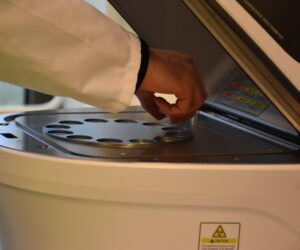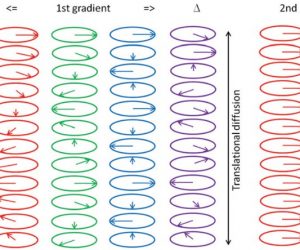Application Notes
All Blogs/Application Notes
Absolute configuration of complex chiral molecules
What this post is about
You will read here about vibrational circular dichroism (VCD) which is a powerful technique to identify absolute configurations of chiral molecules. Its applications are in pharmaceutical industry, in food and fragrances and also plant hormones. You will learn in a short time how the technique works. You will also know the usefulness and limitations of VCD over other techniques like single-crystal X-ray diffraction (XRD) or nuclear magnetic resonance (NMR) with chiral shift reagents.
Why is absolute configuration important?
Many popular drugs contain chiral centers, and the activity of such pharmaceutical compounds is related to their absolute configuration. Consequently, it is no surprise that stereochemically pure the industry standard for a drug. Determining the absolute configuration of a compound is an important task in the analysis of new biologically active compounds. Nonetheless, this is often not straightforward. A reliable method commonly used in industry and academia to determine the configuration of a molecule is X-ray crystallography. However, this requires at the least a single crystal for analysis. Other methods include the NMR-based Mosher’s method and the chiral-liquid-crystal method. The former requires chemical derivatization and the latter requires laborious experimental procedures. Vibrational circular dichroism offers a powerful alternative for the determination of the absolute configuration of compounds without the need for a single crystal or experimental manipulations of the sample. Vibrational circular dichroism has gained significant popularity over the past 50 years through its broad applicability and effectiveness.
How does the technique work?
Vibrational Circular Dichroism (VCD) is based on the differential absorption of left and right circularly polarized light by a pair of enantiomers.1 Whereas the Infrared (IR) spectra of a pair of enantiomers are identical, their VCD spectra are equal yet opposite in sign. To assign which of the opposites belongs to which form of the enantiomeric pair, the spectra are compared to computed spectra generated for a specific Absolute Configuration (AC). In practice, performing a VCD experiment takes 1-12 hours and subsequent AC determination can take up to a week. An important advantage of VCD is that samples can be solid, liquid, gaseous or dissolved with concentrations of 10-100 mM being sufficient. Most commonly, compounds are dissolved in a solvent which has a good spectral window in the area of interest and placed in BaF2 or CaF2 sample cells. Subsequently, an IR spectrum is collected and potential path length or concentration adjustments are considered at this point. The IR spectrum is baseline-corrected by subtraction of the absorbance spectrum of the solvent from the sample spectrum. The VCD spectrum is collected and the baseline can be corrected by subtracting the spectrum of the enantiomer of the sample (preferable), the racemic mixture of the pair of enantiomers or the pure solvent.
Experimental data needs to compared with theoretical data
Multiple steps are required in order to generate the calculated spectra for comparison against the experimental spectra. Consider that in solution, compounds always exist as the sum of the weighted contributions of its conformers. Therefore, the first step in calculating the VCD and IR spectra is to use molecular mechanics to find the lowest energy conformations of a compound within a certain limit (e.g. within 5 kcal/mol of the lowest-energy conformation). These conformations are subjected to Density Functional Theory (DFT) calculations to optimize the geometries and to uncover the vibrational modes and IR respectively VCD intensities. A Boltzmann factor is used to weight the contributions of the individual conformers in the final calculated spectrum. The overlap is used to compare the calculated spectrum with the experimental one. A high overlap indicates the calculated and experimental spectrum stem from the same AC, while low overlap indicates opposite AC for the compounds presented in the spectra.
We have strong expertise in-house
In conclusion, VCD offers a powerful complementary or alternative technique to well-known methods like X-ray crystallography. The technique allows determination of the AC of compounds without any a priori knowledge of the configuration of their chiral centers and can handle liquid and dissolved samples. In the process, one can additionally obtain useful information regarding the conformational population of the stereoisomer. At Spark904 we provide VCD measurements with full data analysis for complex molecules. We do this together with the research group of Prof. Dr. Wybren Jan Buma (UvA) who is an academic expert in this technique.
More recent Application Notes

EDX as a fast and reliable method for routine elemental analysis

NMR technique for average molecular weight determination of polymers
Let's
talk.
Together with you, we
make sure that we find
the answers.
Call us on +31 6 27080833
or use the form.

